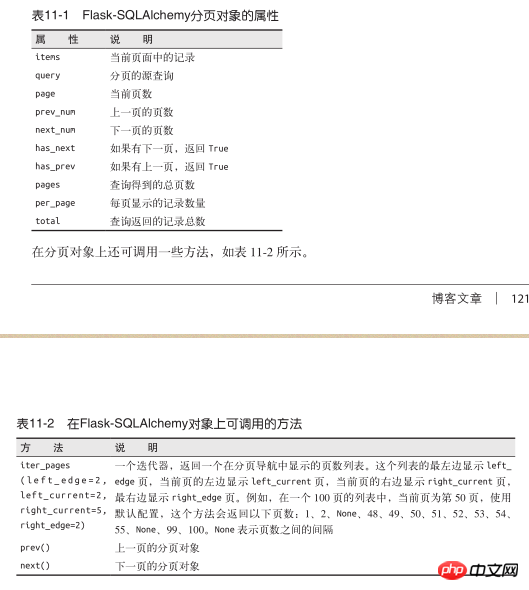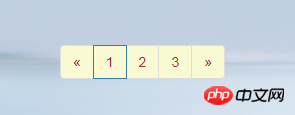
In the process of learning, we will encounter such a problem, that is, in the process of learning, we will find that paging is needed. Here, I will introduce to you the paging mentioned in the book.
@app.route('/',methods=['GET'])
@app.route('/<int:page>')
def home(page=1):
pagination=Post.query.order_by(Post.publish_date.desc()).paginate(page, per_page=10,error_out=False)
posts = pagination.items
link,tuijian_post,fenlei=get_tui_link()
return render_template('home1.html',
posts=posts,
pagination=pagination,
tuijian_post=tuijian_post,fenleis=fenlei,
links=link)This is the paginated data I read from the database. So how do we paginate? Let’s see what the book says

Then we need to use a separate page to save our paging related information.
{% macro pagination_widget(pagination, endpoint) %}
<ul class="pagination">
<li{% if not pagination.has_prev %} class="disabled"{% endif %}>
<a style='background-color: lightgoldenrodyellow;color: brown;' href="{% if pagination.has_prev %}{{ url_for(endpoint,
page = pagination.page - 1, **kwargs) }}{% else %}#{% endif %}">
«
</a>
</li>
{% for p in pagination.iter_pages() %}
{% if p %}
{% if p == pagination.page %}
<li class="active">
<a style='background-color: lightgoldenrodyellow;color: brown;' href="{{ url_for(endpoint, page = p, **kwargs) }}">{{ p }}</a>
</li>
{% else %}
<li>
<a style='background-color: lightgoldenrodyellow;color: brown;' href="{{ url_for(endpoint, page = p, **kwargs) }}">{{ p }}</a>
</li>
{% endif %}
{% else %}
<li class="disabled"><a href="#">…</a></li>
{% endif %}
{% endfor %}
<li{% if not pagination.has_next %} class="disabled"{% endif %}>
<a style='background-color: lightgoldenrodyellow;color: brown;' href="{% if pagination.has_next %}{{ url_for(endpoint,
page = pagination.page + 1, **kwargs) }}{% else %}#{% endif %}">
»
</a>
</li>
</ul>
{% endmacro %}So how do we use it
{% import "mac.html" as macros %}Add the following
 ## after our loop
## after our loop

The above is the detailed content of Detailed introduction to flask paging. For more information, please follow other related articles on the PHP Chinese website!
 mysql paging method
mysql paging method
 jquery implements paging method
jquery implements paging method
 Solution to split word table into two pages
Solution to split word table into two pages
 How to withdraw cash from Yiouokex
How to withdraw cash from Yiouokex
 What is short selling?
What is short selling?
 pycharm installation tutorial
pycharm installation tutorial
 Solution to failed connection between wsus and Microsoft server
Solution to failed connection between wsus and Microsoft server
 linux scheduled shutdown command
linux scheduled shutdown command
 How to run python in vscode
How to run python in vscode




